There are numerous types of vivaria nowadays and paludarium just happens to be one of the popular ones. For curious minds, you might be wondering what animals can live in a paludarium.
To give you an idea, these creatures can be:
- Amphibians
- Fish
- Reptiles
- Crustaceans
Since those are popular amongst paludarium owners, I’ll go over the type of animals in each category.
Due to the popularity of paludariums, I even wrote a list of tips before you begin your paludarium construction:
In this article “What Animals Can Live In A Paludarium,” you will learn:
- the brief summary of paludariums
- the proper environment when it comes to owning one
- common species of paludariums
Feel free to utilize the table of content below.
VivariumTips.com is a participant in the Amazon Services LLC Associates Program, an affiliate advertising program designed to provide a means for us to earn fees by linking to Amazon.com and affiliated sites.
Paludarium Introduction
Paludarium is a different form of an aquarium, in that it offers multiple habitats for animals to survive within a confined space.
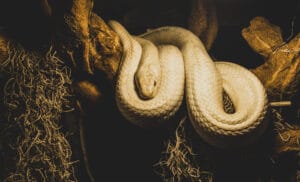
It contains water, air, and land all within a single aquarium-like structure, in an ecosystem that mimics the original environment that these creatures live in.
Often, this is the perfect environment where they would be trying to reproduce.
There are some people that even think about keeping spiders and birds inside the paludarium; however, that is very far from its typical habitat and should not be done.
There is an important aspect of maintaining the proper quantity of moisture within the paludarium so that it would be ideal for all the creatures living in it.
The Proper Environment For Paludariums
One of the most difficult aspects of having a proper paludarium is its ecosystem. The inhabitants within the paludarium consist of creatures as well as plants.
They need everything to be working in a proper manner, be it the humidity, the lighting, the temperature, or the filtration.
What’s more – the species of features that are to be kept within the paludarium should be compatible with each other.
Some species are pretty territorial, and they can be cannibalistic towards their own species as well as towards other creatures.
Tip: Check animals and plant compatibility before placing them together.
As a rule of thumb, the paludarium should only house one particular species that is likely to be very successful within their close confinement habitat rather than having a lot of other features.
Common Species Inside Paludariums
There are some species that are commonly kept inside of a paludarium.
You can expect:
- Amphibians
- Fish
- Reptiles
- Crustaceans
Let’s go over the list.
Amphibians
There are different types of amphibians that have made the paludarium their choice of habitat within a house. The paludarium provides them with the perfect ecosystem which can be suited for their moisture content as well as for their normal reproductive systems.
These common paludarium amphibian animals are:
#1 Poison Dart Frogs
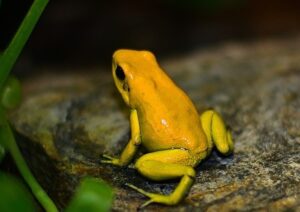
There are many variants of poison dart frogs that can be found across the world, and all of them are wonderful candidates to be housed inside the paludarium.
Although the name suggests that they are poisonous, the title can be a bit misleading; they are not always poisonous when kept in captivity, and neither are the frogs or the toads.
They are usually bright-colored and therefore they can be very easily seen through the foliage within the paludarium.
I even wrote several articles about the poison dart frog:
They mostly spend their time on the land, and although some species of poison dart frogs spend time in the shallow water, they ventured out to the land pretty soon.
If there are large leaves, then the poison dart frogs would make it their home.
#2 Oriental Fire-bellied Toad
The fire-bellied toad is not actually a toad, but rather a frog. They produce a very mild toxin, and although it is not deadly for humans, it is still advised to wash your hands after working with them.
Fire-bellied toads should normally be kept alone in the paludarium and not with other species due to the toxins which would affect anyone living with them.
They are pretty active, relatively easy to maintain, and enjoy living in close confinement, particularly in the vicinity of both land and water.
It is the bright red coloration that makes it a very attractive prospect to keep in the paludarium.
Check out:
#3 Salamanders
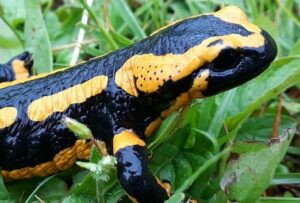
One of the most uncommon species to have in the paludarium, salamanders is a purely aquatic creature.
Of course, there are various species of salamander is that can be purely terrestrial or semiaquatic, but generally, it prefers the water.
Therefore, the paludarium environment should have a lot of moisture content as well as plenty of hiding places.
Decorating the paludarium with leaf litter, bark, as well as pieces of wood, is suggested. Small insects like slugs and other live food happen to be their staple diet.
Please note that salamanders are very shy, and are definitely nocturnal in nature.
It is due to these characteristics that they make the perfect pets to have in the paludarium.
Of course, one has to remember that the soap and detergent that we use on our hands can be pretty sensitive to the skin of a salamander and would harm them.
The salamanders are also endangered in the wild, to ensure that when you get a salamander, it comes from a stock which is bred in those.
It can be illegal in certain areas to be keeping wild salamanders in your paludarium.
Fish
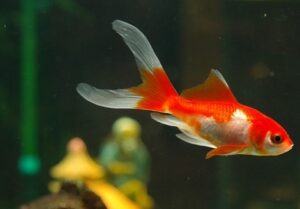
The normal fish that you keep on an aquarium can definitely fit into a paludarium, what with its big size and a proper environment.
However, you have to be sure of the fact that these fishes are not predatory.
Moreover, keeping fishes with other amphibians might result in the fishes being eaten as food. Catfish is a very common kind of fish that is kept in the paludarium, along with Killifish.
#1 Archer Fish
One of the most interesting kinds of fishes to be kept within the paludarium, the banded archerfish is a proper candidate for this environment.
They are known to eat crabs, other fish as well as the vegetable matter that you drop in the water.
The best part about keeping archerfish is their ability to shoot water upwards, thereby knocking their prey and consuming them from a distance of two meters away.
If the prey is close enough, they also have the ability to jump out of the water and get them.
This is why you should always check the compatibility of the animals you’re going to place in a paludarium together!
Keeping such an interesting fish not only livens up the paludarium but also makes it interesting to watch on a daily basis.
#2 Mudskippers
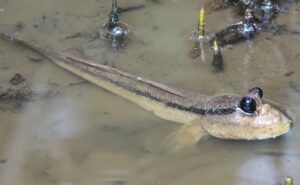
Loosely resembling a salamander, mudskippers are known to walk out of the water with their fins and have the ability to use their skin to breathe air.
They make the perfect specimen to have in any paludarium, as they are resilient, while not having any problems in their feeding habits as well.
Anything smaller than can fit in their mouth can be very easily consumed by the mudskipper.
Moreover, the natural habitat of a mudskipper is a mangrove swamp; therefore any paludarium being a mudskipper should be filled with mangrove roots as well as brackish water.
Having a general gradient sloping into the water also properly replicates a beach, which is an ideal environment for them.
The best part about keeping a mudskipper is the fact that they are wonderful tank mates to the banded archerfish, and do not compete for food.
#3 Killifish
Bright colored, and often have the ability to adjust to any temperature and water body, the Killifish is one of the most resilient and versatile fishes that you can find in an aquarium.
Transition into a paludarium is not a problem, and they can be generally found to tolerate even the smallest of spaces without any problems whatsoever.
Most of the people would advise you against having Killifish simply because they are pretty aggressive in nature, and there is a requirement to always provide them with a live feed.
However, if these circumstances can be circumvented, chances are that you would enjoy having them in your paludarium.
These are exclusive to the rainforest, and they enjoy the darker shades within the paludarium.
Therefore – to properly create a habitat for the Killifish, it would be imperative to have a lot of leaves and plants within the paludarium create shades for them to hide and stay.
The South American variety of the Killifish, namely the Rivulus has been observed to occasionally get out of the water and lie down on the bank of the paludarium and sometimes to the glass a few millimeters above the level of water in the paludarium.
These are interesting habits that one can observe by keeping the killifish in their paludarium.
Reptiles

Turtles and lizards have also been able to find a place in a properly decorated paludarium, and they continue to thrive in that environment.
The loggerhead musk turtle is a staple feature in any paludarium that would like to keep reptiles simply because they spend a lot of time some more in the water itself.
There is no need for them to remain active, and while they are carnivorous and can consume anything that they catch including other tank mates, they also provide proper cleaning up due to their scavenging habits.
These turtles can grow pretty large, and can live a very long period of time; consider these features before you get a turtle for your paludarium.
However, do not get a non-native reptile for your paludarium since they can end up causing problems for the other tank mates.
Crustaceans
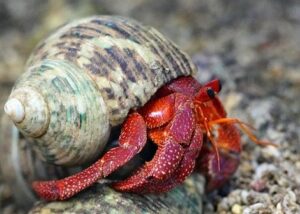
The brackish as well as freshwater crabs are the ideal candidates to keep in the paludarium.
They work pretty well and are able to adjust to the high moisture level as well as the normal environment of the paludarium.
However, you need to keep the paludarium filled with bogwood so that it becomes very easy for them to frolic around.
Here are the types of crustaceans, so you can get an idea:
- Crabs
- Lobsters
- Prawns
- Woodlice
The Intermingling Of Species
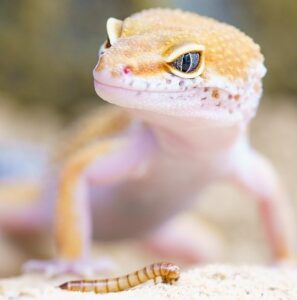
Some Species Are Not Compatible
Now, although maintaining a large paludarium may seem daunting, and you might even have a desire to lodge multiple species within that confined space, you should not do so unless they’re compatible.
This is primarily because the mixing of species without knowing about their characteristics will only result in the death of at least one or more creatures.
This could be due to the cannibalistic behavior, territorial conflicts, or even the kind of toxins that are produced in their bodies.
They could also be carriers of diseases that would not bode well for the other creatures in a confined space.
Some Species Are Compatible
However, there is some intermingling of species that actually work wonders for the paludarium.
One of them is the mixing of the banded archerfish with the mudskippers.
They are generally going to keep themselves confined to their own space, and therefore do not create any conflicts.
However, a word of caution –
Always try and get the archerfish and the mudskippers of the same size otherwise when one of them becomes larger than the other, it can cause problems.
Keep This In Mind
It is also wise to understand that with a larger sized paludarium, you might be able to keep multiple species in their own sections.
One such example would be keeping frogs and Killifish that do not come in contact with one another.
If there is no contact between the species, problems do not arise.
For example:
In a paludarium, you can keep water and land animals in the same tank/ecosystem. By having fish and reptiles, they will be separated from each other.
However, you should also be prepared for the eventuality that having a bigger paludarium would result in a lot of time required for maintenance.
It might also require expert help that could end up costing you a substantial amount of money in the long run.
From VivariumTips,
To put things into perspective – if this is your first time owning a paludarium, it is better for you to stick with a single species and understand their behavior before venturing out into keeping multi-species.
This way, you would be able to research the proper environment that each and every species enjoy, and the kind of behavior that they like to display as well as how well they are adapting to their captive surroundings.
You need to plan the conditions of your paludarium around that particular species and provide appropriate attention to the humidity and temperature control.
The feeding timings should also be noted down and you should be willing to experiment with the different kinds of plants as well as other instruments that you can insert into your paludarium.
That way, if you see any kind of stress, you can remove that instrument or plant and note it down for future reference.
Please remember that having multiple species may seem exotic – but the lesser they come in contact with one another, the happier they are.
Ultimately, as the owner, it is your responsibility to ensure that the animals that you care for are safe and secure.
Always ensure that as a responsible owner, you only purchase from captive stock and not captured from the wild as it is not only illegal but results in the depletion of that species.
If you find this article “What Animals Can Live In A Paludarium” helpful, be sure to check out related content:
- Types of Vivariums (Paludariums and more!)
- Facts/Tips For Your Paludarium Construction
- Terrarium Vs. Vivarium. Vs. Paludarium
- Riparium Vs. Paludarium
If you have any questions or comments, feel free to post it right below this article and I’ll get back to you as soon as possible.
You can support VivariumTips by sharing this article with people that are interested in paludariums! 🙂

